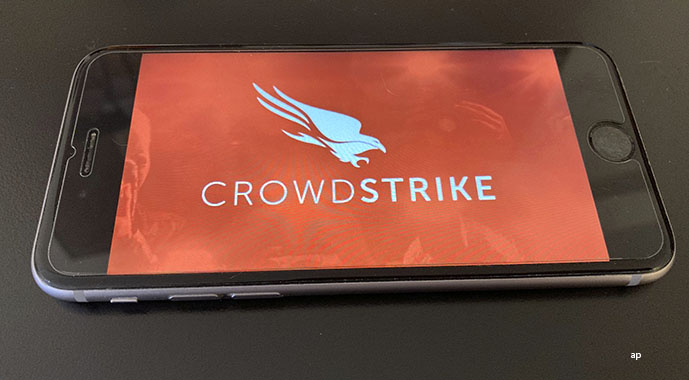I’ve never thought of my dividend-focused investment strategy as being primarily rules-based. In changing times—and the times are always a-changin’—it helps to have a flexible view of the world. For example, when buying a stock, I always require the prospect of acceptable dividend growth going forward. But that, of course, is a matter of prediction. While a history of dividend increases can make me more confident in future growth, I see no point in requiring 10 or 20 years of uninterrupted dividend increases before buying. In fact, some of my favourite investments right now (such as Compass Minerals (CMP) and Philip Morris International (PM) have not even been public long enough to build a long-term record.
Still, at the heart of my strategy, there are two very important rules. The first, naturally, is that any stock I buy must pay a dividend. I want the income—to meet my personal financial objectives and drive total returns. I also want the discipline that a meaningful dividend imposes on the companies in which I’ve invested. Historically, dividend-payers have outperformed non-payers, and high-yielding stocks have outperformed low-yielding ones.
The second rule is this: I won’t buy a stock—no matter how alluring its dividend might be—unless I can conclude that the business that pays it is protected by an economic moat (also known as a sustainable competitive advantage). This “moat” rule is a little less intuitive than the first rule, but it gets right at the heart of what separates a good business from a bad business, a reliable dividend from a risky one, and an attractive total return from a poor one.
What’s a Moat?
Competition is great for consumers; it drives prices lower and spurs innovation. It’s also the enemy of profits—the profits companies need to sustain good dividends. Virtually every business faces competition of one kind or another, but only some businesses can successfully defend their profits from competitive threats. These identifiable, structural, and durable defences form what we refer to as an “economic moat”. We at Morningstar didn’t invent the term economic moat; credit for that goes to no one other than Warren Buffett. But more than a decade ago, we embraced and elevated the concept, weaving it through every element of our research process.
We sort the possible forms of an economic moat into five categories, which are briefly described below:
1.Cost advantages, such as those that come from size (economies of scale) or uniquely productive assets.
2.Switching costs, which make it difficult for customers to switch between services, suppliers or products.
3.Intangible assets, including brands and patents. A company like Johnson & Johnson (JNJ) has both.
4. The network effect, in which a system of some kind becomes more valuable to users as more users join. EBay (EBAY) is a classic example, and Facebook (FB) is a new one.
5. The final category is a concept we term efficient scale, representing lines of business where there literally isn’t enough revenue to divide profitably with potential new entrants given the up-front investment a nascent competitor would have to provide. Some of my favourite firms fall into this category including regulated utilities, pipelines, and telecom firms.
The effect of one or more of these “moat” attributes is to widen profit margins and returns on capital beyond what would otherwise be sustained.
When analyzing companies, we at Morningstar are constantly on the lookout for these attributes. Companies we expect to have the longest-lasting moats earn our “wide-moat” rating; those with shorter but still meaningful advantages are classified as “narrow-moat”. This isn’t to say that no-moat businesses aren’t capable of turning an adequate profit; some do and will in the future. But having no moat implies that any periods of high profitability are likely to be temporary.
Moats and Dividends
This may sound like the arcane stuff of MBA programmes, but the state of competition has a massive effect on investor returns. My top priorities when it comes to stock selection are dividend safety, dividend growth, and an economic moat that will support dividend payments.
Let’s consider General Mills (GIS), which was a recent purchase into my dividend-focused portfolio. We at Morningstar think a business like this one ought to earn a 10% return on equity in order to satisfy investors. However, off an equity base of only $9.90 a share and only a modest boost from financial leverage, the firm expects to earn $2.65 a share this year—a return on equity of 27%. In fact, just to pay the $1.32 a share dividend, General Mills needs to earn a 13% return on equity. Without the advantages of long-lived and well-known brands (intangible assets) and of handling $18 billion a year in sales (cost advantages), we couldn’t reasonably expect this level of profitability to persist. That would not only hurt the potential for dividend growth, it would threaten the dividend itself. But thanks to General Mills’ narrow moat, the company hasn’t had to skip or even cut its dividend in a 113-year history of cash payments to shareholders.
An economic moat can help satisfy our first strategic imperative, but it can—and should—do more than just protect existing dividends. To make General Mills a worthwhile investment, we need to be able to expect total returns of 10%. General Mills is on track to pay half of its fiscal 2013 profits out as dividends, providing a yield of 3.4%, while retaining earnings equal to 3.4% of the current stock price. To earn an adequate return, General Mills needs to provide long-run dividend growth of at least 6.6% (our 10% required return less the 3.4% current yield). How does 3.4 percentage points of retained earnings turn into 6.6 percentage points of long-term growth or more?
Once again, its economic moat comes in very handy. Without a moat, we’d be lucky if a dollar of retained earnings provided a dollar’s worth of future dividend payments. But when General Mills ploughs a portion of its profits back into the business—expanding its capacity to meet increased demand, whetted in part by new products and marketing—we expect more than a dollar’s worth of value because these expenditures are protected by General Mills’ moat. If the company used its retained earnings to open a factory making kitchen sinks, a field that wouldn’t be protected by the same moat that Cheerios is, we’d be lucky if the company even got its money back.
However, even if a moat is a necessary precondition for a safe and growing dividend, it’s not the only thing to consider. In some cases, a company may have an economic moat, but it may be operating in an industry that is in decline. Meanwhile, there are plenty of narrow- and wide-moat companies paying pitifully small dividends because their management teams prefer to chase acquisitions or focus on share buybacks instead. Therefore, keep in mind that a moat doesn’t guarantee good dividend growth.
Still, a focus on economic moats provides a powerful tool for investors of all stripes, especially income-oriented investors. Sustainable competitive advantages, married to a solid balance sheet, at least a little secular growth in profits, and a shareholder-oriented management team is as good a formula for reliable and rising dividends.
The original version of this article appeared in the September 2012 edition of the Morningstar DividendInvestor newsletter, which is published out of the US office.































